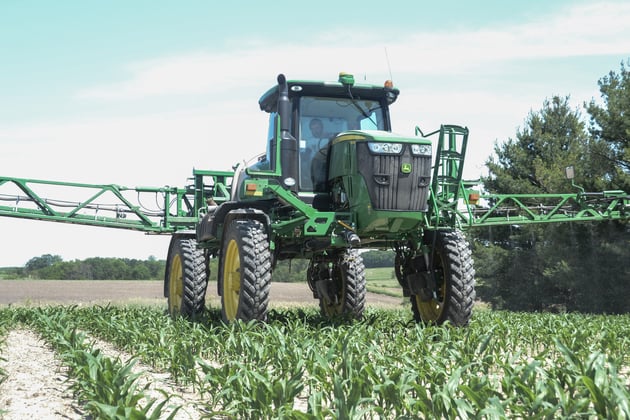Row Spacing and Ag Tires
Ask any long-time farmer what the secret to running a successful operation is and you’re sure to get a multitude of answers—but the underlying theme you’ll discover is the maximization of resources. For today’s farms to flourish, it's vital that they make the most of all of their assets, from dollars and manpower to the soil beneath the sun. One way farmers are increasing efficiency is with narrow row spacing, which allows them to intensify the management of two limited resources: the land and the sun. And to keep up with changing practices like narrower row spacing, new innovative tires are being developed to help farmers reduce the impact of their machinery on the land while keeping their farms sustainable.

The Past
In the past, row spacing was determined by the amount of room needed for horse-drawn equipment to operate between rows of crops. However, the mechanization of farm equipment allowed farmers to begin experimenting with narrower rows in the quest to more efficiently use their space and resources. Even as seeding equipment and genetics adapted to narrow-row practices, early adopters of narrow-row spacing were still limited by their tires, as heavy machines need a wide tire to minimize compaction and avoid rutting fields. Even today, farmers are challenged as they task machinery that is getting increasingly larger and more powerful with operating in rows that are getting tighter.
The Present
The question facing today’s farmers is how to use the bigger, heavier equipment needed to operate on growing farms while minimizing soil compaction. Or put more simply, how to maximize yields today without damaging future prospects. One of the ways tire companies are battling soil compaction while staying within the limits imposed by narrow rows is with taller tires. Tall tires allow manufacturers to increase a tire’s footprint—minimizing compaction—by making it longer, rather than wider, so it fits in a row more easily.
IF/VF
Another way we're combating compaction is with IF/VF technology. IF/VF technology, or increased flexion and very-high flexion, allows tires to carry the same load as a standard radial tire while running at 20 to 40 percent less air pressure. Lower air pressure equals lower compaction pressure, and it also gives the tire a larger footprint, which helps to better distribute the weight of the machine. Furthermore, all our IF/VF tires are steel-belted to ensure a uniform footprint and help minimize a machine’s impact.
The Future
Looking to the future, tires made to operate in the confines of narrow rows will continue to improve as the quest for greater yields drives innovation in all aspects of ag. In fact, we already have a few futuristic tires in our lineup. For example, our innovative Alliance AgriFlex 363 IF/VF can be used on everything from tractors to self-propelled sprayers to towed implements and not only works great in the field—helping reduce compaction—but is excellent on the road as well, making them ideal for use on today’s large farms or by contractors who spend as much time traveling to fields as they do working in them.
We're constantly working to solve the real-world problems facing our customers. If you’d like to learn about the Alliance AgriFlex 363 IF/VF or hear more about our industry-leading line of steel-belted IF/VF tires, contact your dealer today.

